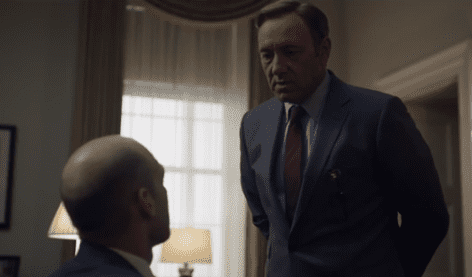You don’t have to be James Cameron to make epic video content for your brand. Thank modern video technology for that. You do, however, need some creative finesse to make content that will rise above the noise and inspire action.
If you’re going to compete with known video trailblazers and stand out in your industry, you have to tell a story with the endearing magic of Chipotle’s Scarecrow, even if you don’t have a mega-budget. Moreover, the video has to make your audience want to engage with your brand and your call-to-action if you’re going to see any ROI.
Practice makes perfect, but to start shaping better stories now, get started with these three nuggets of video marketing advice.
1. Support Your Story with Camera Angles
The placement of your camera plays a big part in how your video’s speaker is perceived. In fact, we see this technique used all the time without consciously thinking about it. If you frame a shot below your subject’s eye-line, they take on a sort of “power pose” (as the viewer sees them from below), and this shapes the audience’s perception of the character in question.
House of Cards fans see this all the time with the devious Frank Underwood. When speaking to the audience, the character is often filmed towering over the camera, which ultimately gives him more perceived power over those of us binge watching at home.

When speaking to other, less powerful characters, he’s also framed looking down upon those he rules.

(Sheesh, that Frank sure is an authoritative figure!)
The video marketing lesson here is that you can control the appropriate perception of your characters by choosing the correct camera angles.
When telling an inspiring story about your customer, for example, filming them with an ever-so-slight upshot can make them look like a hero. If you want to appeal to your audience with a plea (maybe you want them to donate to a cause), consider placing the camera slightly above your subject so that they “look up” to your audience when they ask for something. If you want to put your subject on equal footing with the audience, have them look at the camera straight on.
You’ll often see this eye-level approach with videos from the White House featuring President Obama, who looks you right in the eye as he delivers his message. It’s a persuasive visual tactic that positions him on the same level as the Americans he addresses. He’s not on a podium talking at you, he’s on a couch speaking with you.
Overall, use your camera angles to tell a story about the implied character of your speaker. Think of the three angles as the “power pose”, the “appeal”, and the “equal footing,” and use them to shape your message where appropriate.
2. Be Authentic
When choosing the person who will tell your brand’s story in a video, be selective. Even if you want to show off your bubbly CEO, over-enthusiastic actors can hurt your message. You want to cast someone who can hold attention with their intonation, all the while being super authentic. If you get this critical balance wrong, your audience will bounce really quickly because of how unnaturally hyper or phoney your actor seems.
Take a look at this award winning Nike commercial called ‘Voices’. The brand’s well-crafted message wouldn’t be half as effective if the women didn’t sound this genuine:
Remember that your audience can sense inauthenticity in a snap, and it has a huge impact on how long they’ll stick around. Choose someone with a genuine quality to their voice and body language to present your company’s message.
3. Create Emotion with Timing
One of the best ways to be persuasive is to elicit some emotion from your audience. It doesn’t matter if they’re laughing or crying at the end of your video, but they better feel something or else they won’t follow through with your call-to-action.
A lot of B2B brands want to make inspirational video content, but wonder how to leave their audience feeling inspired. My advice? Consider the pacing of your video.
In this example made by Channel 4 to promote the 2012 Paralympic games in London, the video starts slow, then builds momentum. They tell a story without using many words at all, and they showcase the backstories of the athletes in a way that strikes an emotional chord.
Watch how they use music, slow motion, and the last sequence of high-speed shots to leave you stunned at the strength of these super humans:
On a whole, your video content can reach new levels of persuasive power when you start to think about how you establish believable characters, how you convey authenticity, and the emotions you want to stir up in your audience’s hearts with your stories. If you connect these emotions to the actions you want your audience to take, you’ll be on your way to video marketing success in no time.
